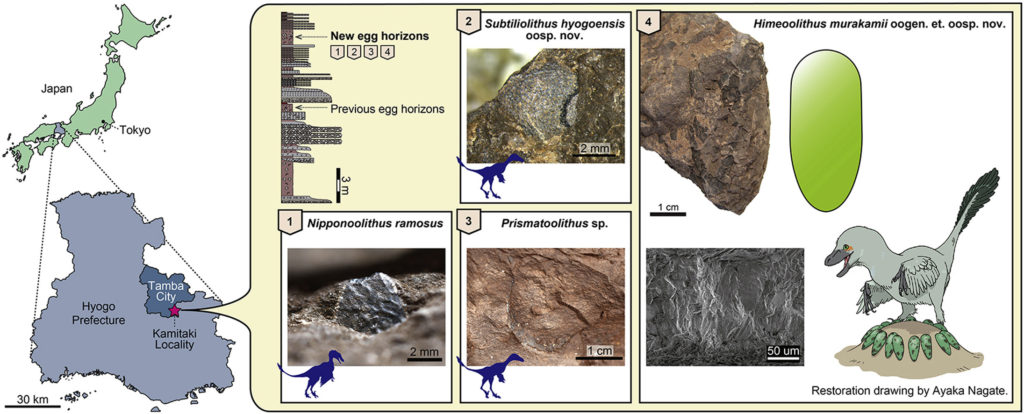@WFS,World Fossil Society,Riffin T Sajeev,Russel T Sajeev
Exceptionally small theropod eggs from the Lower Cretaceous Ohyamashimo Formation of Tamba, Hyogo Prefecture, Japan
Abstract
The Kamitaki Locality in the Albian Ohyamashimo Formation in the eastern Hyogo Prefecture of southwestern Japan is among the richest Lower Cretaceous fossil egg sites in the world. So far, eggshells of five different ootaxa, one ornithopod and four theropods, have been identified from the Kamitaki Bonebed Quarry. Although previous discoveries of egg remains were limited to isolated eggshell fragments, here we report on the discovery of a nearly complete egg, several partial eggs, as well as numerous eggshell fragments from horizons of the newly excavated Kamitaki Egg Quarry that are 5.5–6.75 m above the Kamitaki Bonebed Quarry. Taphonomical investigations indicate that the new site preserves the remnants of an in-situ nest of Himeoolithus murakamii oogen. et oosp. nov., mixed with scattered and isolated eggshell fragments of other non-avian theropod ootaxa, including Nipponoolithus ramosus, Prismatoolithus sp., and Subtiliolithus hyogoensis oosp. nov. The most abundant ootaxon at the quarry, Himeoolithus, is represented by four eggs and over 1300 scattered eggshell fragments. Himeoolithus is the smallest non-avian theropod egg known to date (9.9 g in estimated mass) and exhibits an unusually elongated shape (length:width ratio of 2.25) for such as small egg. The presence of six dinosaur ootaxa from the two quarries at the Kamitaki Locality reveals a hidden diversity of small dinosaurs, particularly non-avian theropods, in the Hyogo region and indicates the area was utilized for nesting by various small dinosaur species at the end of the Early Cretaceous.
Journal Reference: Kohei Tanaka, Darla K. Zelenitsky, François Therrien, Tadahiro Ikeda, Katsuhiro Kubota, Haruo Saegusa, Tomonori Tanaka, Kenji Ikuno. Exceptionally small theropod eggs from the Lower Cretaceous Ohyamashimo Formation of Tamba, Hyogo Prefecture, Japan. Cretaceous Research, 2020; 114: 104519 DOI: 10.1016/j.cretres.2020.104519
@WFS,World Fossil Society,Riffin T Sajeev,Russel T Sajeev



 July 5th, 2020
July 5th, 2020  Riffin
Riffin 
 Posted in
Posted in  Tags:
Tags: 